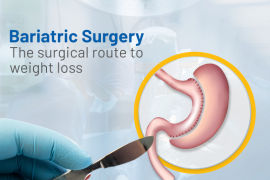You’ve probably heard this term ‘Obesity’ a lot of times in your life. Obesity is recognized as a significant public health hazard, as it increases the risks for multiple diseases such as type 2 diabetes and other cardiovascular diseases. Obesity is a complex disease involving an excessive amount of body fat that increases the risk of other diseases and health problems, such as diabetes, heart disease, high blood pressure and certain cancers. Today, more than one-third of the world’s population has been affected by this complex, multifactorial, and largely preventable disease. If these secular trends continue, by 2030 an estimated 38% of the world’s adult population will be overweight and another 20% will be obese. This epidemic of overweight presents a major challenge to chronic disease prevention and health across the life course around the world.
Increasing ease of life, owing to minimize physical labour and automated transportation, a sedentary lifestyle, and liberal access to calorie-dense food has turned a once-rare disease of the affluent into one of the most common diseases of this century. Luckily, overweight and obesity, as well as their related non-communicable diseases, are largely preventable. Common treatments for this disease include losing weight through being more physically active, healthy eating, and making other changes to your habits. But, for the people who have extreme obesity and haven’t been able to lose enough weight are advised other treatment options like weight-loss medicines, weight-loss devices, or weight loss surgery (bariatric surgery). Let us dig in deep to understand more about bariatric surgery and its types.
What is bariatric surgery?
Bariatric surgery is a kind of surgical procedure that aids in weight loss by altering your digestive tract. This surgery leads to weight loss by reducing the quantity of food your stomach can hold, causing you to feel full in a lesser quantity of food uptake. Generally, it is performed when lifestyle changes like diet or exercise plan fail to work or your excess body weight is causing serious complications. Some bariatric surgery procedures restrict your food consumption, while others reduce the capacity of your body to absorb nutrients from your meals and a different kind of surgery can work in both ways.



Types of bariatric surgery
The type of surgery that may be best to help a person lose weight depends on several factors. One should discuss with their doctor what kind of surgery might be best for them. Gastric Bypass, Sleeve Gastrectomy, Adjustable Gastric Band and Biliopancreatic Diversion with Duodenal Switch are the most frequently performed bariatric surgery types. Each type is associated with its own merits and limitations.
- Gastric Bypass or Roux-en-Y Procedure: This surgery is typically a non-reversible procedure and functions by reducing the capacity of food you can eat in a single meal as well as decreasing the absorption of nutrients. In this procedure, the surgeon incises across the top portion of your stomach, separating it from the remaining part. The resulting portion will be approximately like the size of a walnut and will be able to hold just a small quantity of the food as compared to the usual capacity. Then, your surgeon will incise the top portion of the small intestine and joins it directly onto the separated pouch of the stomach. Thus, the food directly enters this portion of the small intestine from the stomach, bypassing the majority of your stomach and a part of the small intestine. This procedure leads to a significant weight loss of 60% to 80% and bears a >50% excess weight loss maintenance. This procedure also raises expenditure of energy and leads to favourable alterations in gut hormones, which suppresses hunger, decreases appetite and improves satisfaction.
- Sleeve Gastrectomy: This procedure removes around 80% of your stomach, leaving behind just a tubular pouch, which cannot hold much food. The advantages of sleeve gastrectomy include faster and major weight loss of >50%, similar to Roux-en-Y, does not need re-routing of food, associated with a shorter hospital stay and leads to favourable alterations in gut hormones, which suppresses hunger, decreases appetite and improves satisfaction. However, it causes long-term Vitamin deficiencies and possesses a higher complication rate at short-term vs. AGB procedure.
- Adjustable Gastric Band or AGB: It is often referred to as simply “The band”. This procedure involves the placement of an inflatable band around the stomach’s upper part, forming a small pouch above the band, leaving the rest of the stomach’s portion below. In simpler terms, it works by decreasing hunger, aiding the patient to decrease calorie consumption. It leads to an excess weight loss of 40 to 50%. It does not need cutting of the stomach or any intestinal rerouting. It needs a hospital stay of just 24 hours or even less and the procedure is also reversible and adjustable. It possesses the lowest early complications’ rate and also the lowest death rate amongst bariatric surgery procedures. The risk of Vitamin and mineral deficiencies is also minimal.
However, the speed of achieving excess weight loss is lower than the rest and most of the patients fail to lose at least 50%. It needs the placement of a foreign object causing object erosion or other band-related adverse effects. It also needs strict diet plan adherence post-surgery and you need to attend follow-up with surgeon without fail. It is associated with the highest re-operation rate.
- Biliopancreatic Diversion with Duodenal Switch (BPD/DS): This procedure is a two-part surgery. Firstly, a creation of tubular stomach pouch as in sleeve gastrectomy and secondly, connecting the end portion of the intestine to the duodenum near the stomach (duodenal switch and biliopancreatic diversion), bypassing the majority of the intestine. This surgery leads to a greater excess weight loss of 60-70% at 5 years. It permits patients to eat a normal diet in due course of time. It decreases fat absorption by approx. 70% and leads to favourable alterations in gut hormones, decreasing appetite and raises satisfaction. This procedure is termed to be most effective in diabetes patients. However, this technique possesses higher rates of complication and risk for death. It needs a prolonged hospital stay and causes protein, vitamin and mineral deficiencies. Also, strict adherence is required in post-operative diet restrictions and follow-up doctor visits.
Each of the surgery types has pros and cons and various patient factors affect which procedure is chosen including body mass index, eating habits, other health issues and previous stomach surgeries. The patient should discuss the most suitable option with the surgeon by considering the benefits and risks of each type of surgery. However, bariatric surgeries may not be suitable for everyone and so they are only performed if there is a serious health threat to the patient due to their excessive weight.




